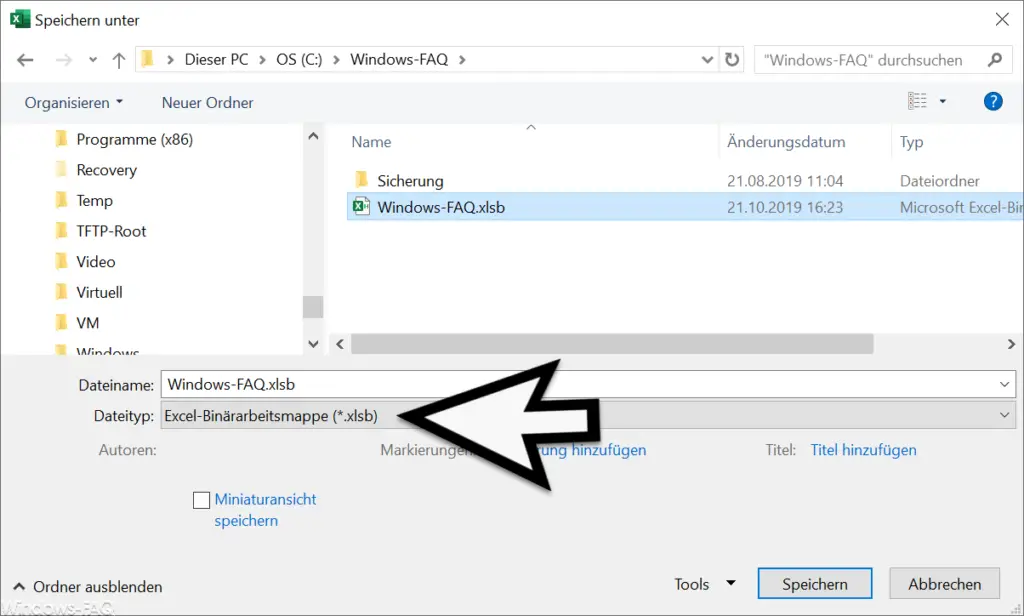Most Excel users do not worry much and save their files in the known
XSL or XLSX
Format, as Microsoft suggests by default in the ” Save As ” dialog. The disadvantage of this Excel file type, however, is that the files can grow very large very quickly. With this Excel tip we would like to show you how you can shrink Excel files very quickly and easily and thus save about 70-80% of storage space .
Save Excel files as a binary workbook
To shrink Excel files you only have to save your XLS or XLSX files in XLSB format. With this
XLSB format
it is the so-called format
Excel binary workbook (XSLB)
and this file saves the Excel files in binary format. All you have to do is select ” Excel binary workbook (* .xlsb) ” as the file type in the ” Save ” dialog box and save the file.

Microsoft introduced this Excel file type with Office 2007 , but this file type is still relatively unknown and is therefore rarely used. However, we have learned that all Excel operations with the XLSB format -performance work.
Below we did a test with a relatively large Excel file . As an XLSX file , the Excel file has a size of a good 100 MB.

In Excel binary workbook format , the file is only 10 MB in size, so we have saved 90 MB of storage space. So far we have not found any disadvantages in terms of content. Many Excel users previously believed that the XSLB format does not support Excel macros , but this is wrong.
If you want to reduce the storage requirements of your Excel files, you should try the Excel binary workbook format XSLB .
If you are interested in further Microsoft Excel tips , please take a look at the following articles here on Windows-FAQ.de.
– Microsoft Excel automatically open several worksheets
– Connect several cells in Excel
– Display Outlook, Word, Excel and PowerPoint in dark design (Dark Mode) – Easily
restore unsaved Excel files
– Create a continuous diagram of an Excel table with missing values
– CSV- Simply import files into Excel